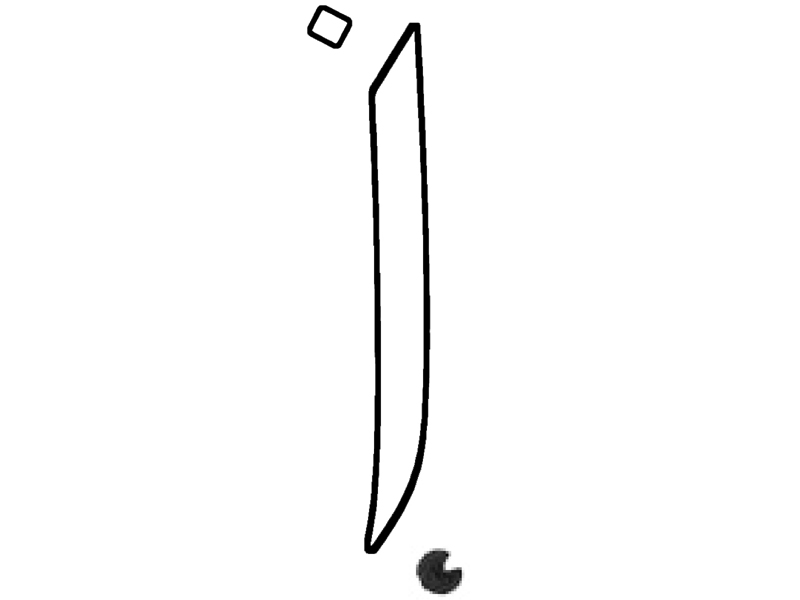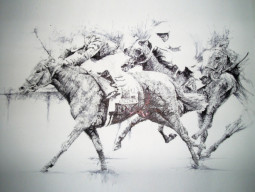
The smarter ones among us have the rare ability to laugh at themselves. They know how ridiculous it is to take anything seriously, especially themselves. These people are either trailblazers or raging madmen, laughing as the world rushes by. They have evolved to realise the pointlessness of what average minds consider important.
Hyderabad artist Mohammad Ali Talpur happens to be one of them. In a series that was shown a year ago at London’s Green Cardamom gallery, Alif, drives home the argument that symmetry can be deceptive. This body of about 14 works, stunning black-and-white pieces, marry powerful contrast with near-perfect balance. But, like all things beautiful, chaos lurks in the wings.
Talpur uses acrylic on canvas and ink on paper to paint calligraphic strokes that closely mimic divine verse. As a gallery statement explains: ‘Alif’, meaning ‘to compose’ in Arabic, is the initial letter in the Arabic, Farsi and Urdu alphabets. As the first letter in the name Allah, it also alludes to the idea of the “first and last existence: awwal and aakhir (first and last)”.
He repeats characters, calligraphic strokes and even the pronunciation markers (zer, zabar, pesh) across the page. They cannot be ‘read’, but when you look at them, they “communicate a sense of reflection and peace”. The image becomes Escher-like because the viewer is taken aback by the dimensions that unfold. The lines dance, the severe grid of zeyr, zabr and nuqta become absurd, morph into something that looks like Pacman.
What appear to be mathematical compositions are not. The idea of Alif attains clarity when the piece starts to make you dizzy.The madness behind the method makes you lightheaded.
Alif also marks a turning point in his career which has long focused on an exploration of the line and a desire to make “art without content”. The gallery disappoints, however, by throwing in this line: The work can also be read as a visual response to notions of rhythm and metre, integral to music and poetry: ... but also intertwined with the sufism-inflected version of Islam. This jargon is textbook Pakistani artist review.

Talpur is too evolved as an artist to transcend in a blatantly obvious way. He is creating space for his own version of the divine. He would like you believe in the meditative healing that symmetry promises. The repetition is meant to calm you, but when you know you are going in circles, the joke’s on you. And his understanding of the form emerges when he laughs with you, because he made you a part of his secret. You are sharing an inside joke with a friend.
Calligraphy is a subtle method, which I use to scratch my body and soul. It is neither a political nor social comment but an investigation of Islamic philosophical and sacred art. Uncountable curved and straight lines dancing like a classical dancer draw our attention to the deepest visual experience of “form is the idea”
Artist’s statement from his earlier exhibit of ‘Alif’ at the Canvas Gallery, Karachi.
Mohammad Ali Talpur, ‘Alif’
Green Cardamom, London
June 29 - July 27, 2012
b. 1976, Hyderabad, Pakistan
Lives and works in Lahore
Published in The Express Tribune, Sunday Magazine, August 18th, 2013.
Like Express Tribune Magazine on Facebook, follow @ETribuneMag on Twitter to stay informed and join the conversation.







































1713525343-0/WhatsApp-Image-2024-04-19-at-4-09-16-PM-(1)1713525343-0-270x192.webp)
1713525453-0/Henry-Cavill-in-James-Bond-(AI)1713525453-0-270x192.webp)






















COMMENTS
Comments are moderated and generally will be posted if they are on-topic and not abusive.
For more information, please see our Comments FAQ